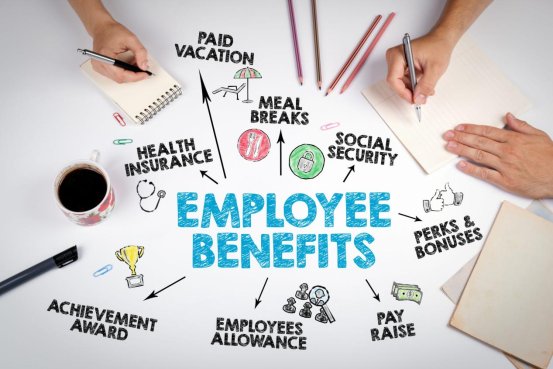In today’s fast-paced work environment, the landscape of employee benefits is undergoing a profound transformation. Benefits are no longer viewed merely as a collection of perks; instead, they have emerged as crucial strategic tools that can significantly influence an organization’s success. Understanding the evolving nature of these offerings is essential for employers aiming to attract and retain top talent.

This article explores employees’ expectations, the role of benefits in talent attraction, employee satisfaction, retention strategies, and their impact on productivity. By recognizing benefits as fundamental to workforce dynamics, organizations can leverage them to create a more engaged and motivated workforce.
Evolving Employee Expectations
Historically, employee benefits primarily revolved around health insurance and retirement savings. However, with evolving workplaces and shifting workforce demographics, expectations surrounding benefits have significantly changed. A recent survey by the Employee Benefit Research Institute reveals that nearly 80% of employees deem comprehensive benefit packages—including flexible work arrangements and mental health support—to be critical factors when evaluating job offers. This marks a notable departure from previous generations that primarily emphasized job security and monetary compensation.
Contemporary workers, particularly Millennials and Gen Z, are reshaping the benefits landscape. According to a study by Glassdoor, 57% of employees prefer additional benefits over a pay raise, underscoring the rising demand for lifestyle-oriented perks. Moreover, 76% of respondents identified mental health resources as a priority, reflecting concerns over increasing workplace stressors and a clear shift toward holistic employee well-being. Flexibility in work arrangements, such as remote work options, has also surged in importance, with research from FlexJobs indicating that 73% of workers desire flexible schedules as a primary benefit. This transformation signals a broader acknowledgment that modern employees seek a balance between work and personal life, emphasizing the necessity for organizations to adapt their benefits strategies accordingly.
Comprehensive Benefits as a Magnet for Talent
In today’s highly competitive job market, comprehensive benefits packages have become pivotal in attracting and retaining top talent. A 2021 survey by Glassdoor revealed that 60% of job seekers prioritize benefits over salary when considering job offers, underscoring the critical role of these offerings in recruitment strategies. Companies offering robust benefits not only gain a competitive edge but also nurture employee satisfaction and loyalty.
Consider Google, renowned for its exceptional benefits such as generous parental leave and wellness programs. According to their HR reports, these perks contribute to a remarkable hiring rate, with 3.7 million applications received in 2022 alone. Similarly, tech startup Buffer has embraced a remote-first policy coupled with transparent salary structures and wellness stipends, successfully attracting skilled professionals while enhancing employee morale.
Statistically, organizations investing in comprehensive benefits experience higher satisfaction and productivity, which subsequently translates into lower turnover rates. As companies navigate modern hiring challenges, focusing strategically on enhanced benefits is not merely advisable; it is essential for securing prime talent in a crowded marketplace. Through thoughtful benefit offerings, businesses can distinguish themselves, encourage innovation, and build a workforce that is well-equipped to tackle contemporary challenges.
The Connection Between Benefits and Employee Satisfaction
In today’s competitive job market, there exists a direct link between comprehensive employee benefits and overall job satisfaction, which profoundly impacts retention rates. Organizations that prioritize understanding and addressing employee needs through tailored benefits packages often foster increased loyalty and reduced turnover. For example, the robust benefits offered by Google—including generous parental leave and mental health resources—have cultivated a culture of belonging and support, contributing significantly to its high retention rates. Netflix’s innovative approach to unlimited vacation policies empowers employees to manage their own time, resulting in improved morale and commitment.
Personalized benefits are crucial; they demonstrate an employer’s recognition of individual circumstances and encourage employees to remain with the organization. Programs such as pet insurance or student loan repayment plans resonate with aspects of employees’ personal lives, enhancing overall satisfaction levels. By aligning benefits with employee preferences, companies can create a more engaged workforce. Ultimately, forward-thinking organizations that invest in understanding their employees’ unique needs through comprehensive benefits not only enhance satisfaction but also solidify their retention strategies amidst a challenging labor landscape.
Enhancing Productivity Through Employee Well-Being
Well-structured employee benefits are directly linked to increased productivity within organizations. Programs aimed at promoting employee well-being—such as wellness initiatives, flexible work schedules, and additional leave—empower employees to thrive both personally and professionally. Companies offering wellness programs report higher employee satisfaction and reduced absenteeism, which in turn boosts overall performance.
A study by the Harvard Business Review found that businesses with comprehensive wellness initiatives experienced a 28% reduction in sick days alongside a 26% improvement in productivity. Additionally, flexible work arrangements have gained traction, with Gallup research indicating that employees with flexible schedules are 20% more productive than those who work fixed hours. Policies that allow additional leave, such as mental health days, further affirm a company’s commitment to its workforce. The evidence is clear: when organizations invest in the well-being of their employees, they simultaneously invest in their business outcomes. Increased productivity creates a compelling case for comprehensive benefits—a win-win scenario for both employees seeking fulfillment and employers pursuing success. Establishing a supportive workforce not only enhances employee satisfaction but transforms organizational productivity into a sustainable competitive advantage.
Rethinking Benefits for Long-Term Success
As the competitive landscape continues to evolve, the role of employee benefits has transcended basic compliance or superficial perks. This article has highlighted essential themes, including the need for tailored benefits aligning with employee values, the extensive impact of comprehensive wellness programs, and the advantages afforded by flexible work arrangements. Employers must now recognize that strategic benefit offerings are crucial for attracting and retaining top talent while enhancing overall employee satisfaction and productivity. As organizations navigate the complexities of today's workforce, rethinking their benefits strategy is not merely advisable; it is imperative for achieving long-term success.





